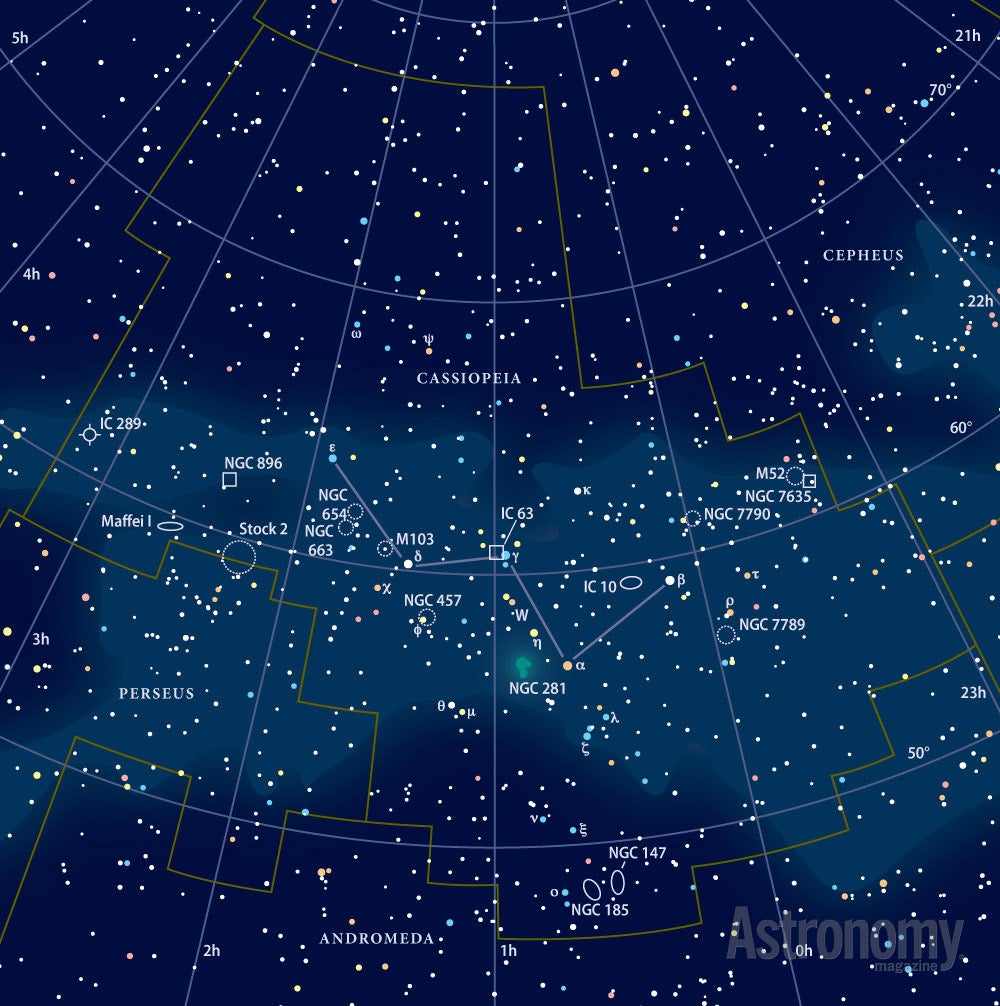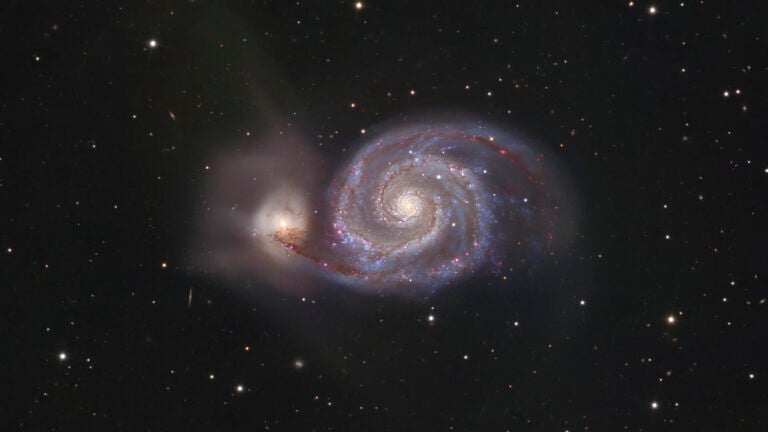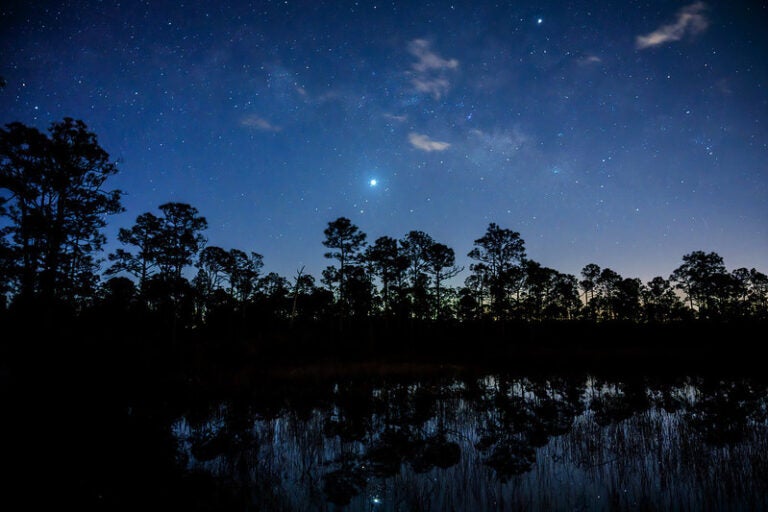If you’re game for a quick evening challenge, try to spot Neptune through binoculars. The distant planet lies halfway to the zenith in the southern sky near the end of evening twilight and doesn’t set until after 10 p.m. local time. The magnitude 7.9 world appears against the backdrop of Aquarius, 0.6° south of the 4th-magnitude star Lambda (λ) Aquarii. You’ll need binoculars to spy Neptune and a telescope to see its blue-gray disk, which spans 2.3″.
Saturday, December 16
Head outside in early evening this week and you can see the Big Dipper scraping the northern horizon. For latitudes north of about 40°, this conspicuous asterism never sets (“circumpolar” in astronomical parlance), though December evenings find it at its lowest ebb. This means that the constellation on the opposite side of the North Celestial Pole, the familiar W-shaped Cassiopeia, currently rides highest in the sky.
Sunday, December 17
The variable star Algol in Perseus appears faintest at 2:22 a.m. EST tomorrow morning, when it shines at magnitude 3.4. Observers across North America should start watching it after darkness falls tonight if they want to witness its dramatic drop from peak brightness (magnitude 2.1). This eclipsing binary star runs through a cycle from minimum to maximum and back every 2.87 days, but the drop from peak brightness and subsequent rise lasts only about 10 hours. Algol appears in the east-northeast after sunset and passes nearly overhead around 9:30 p.m. local time.
Monday, December 18
New Moon occurs at 1:30 a.m. EST. At its New phase, the Moon crosses the sky with the Sun and so remains hidden in our star’s glare.
The Moon also reaches apogee today, at 8:26 p.m. EST. It then lies at its farthest orbital distance from Earth, 252,651 miles (406,603 kilometers) from our planet’s center.
Although Uranus reached opposition exactly two months ago, it remains a tempting target. The outer planet climbs highest in the south around 7:30 p.m. local time, when it appears two-thirds of the way to the zenith. The magnitude 5.8 world lies in southeastern Pisces, 3.5° west of the 4th-magnitude star Omicron (ο) Piscium. Although Uranus shines brightly enough to glimpse with the naked eye under a dark sky, binoculars make the task much easier. A telescope reveals the planet’s blue-green disk, which spans 3.6″.
Wednesday, December 20
Mars stands out in the southeastern sky before dawn this week. The magnitude 1.6 Red Planet rises some four hours before the Sun and appears 25° high as twilight starts to paint the sky. It currently resides among the background stars of eastern Virgo, though it will cross into neighboring Libra later this week. Unfortunately, the view of Mars through a telescope proves disappointing — it spans only 5″ and shows no detail.
Thursday, December 21
Earth’s winter solstice occurs at 11:28 a.m. EST. At that moment, the Sun reaches its farthest point south in the sky. The solstice marks the official beginning of winter in the Northern Hemisphere, and today has fewer hours of sunlight (and thus more hours of darkness) than any other. From mid-northern latitudes, however, the earliest sunset occurred about two weeks ago and the latest sunrise won’t happen until early January.
Saturn passes behind the Sun from our perspective, a configuration astronomers call solar conjunction, at 4 p.m. EST. Needless to say, our star’s glare makes it impossible to see the planet. Saturn will return to view before dawn in January.
The Ursid meteor shower peaks before dawn today. The shower’s radiant — the point from which the meteors appear to originate — lies in the constellation Ursa Minor, near the top of the Little Dipper’s bowl. The radiant is visible in the north all night, but climbs higher as dawn approaches. With the Moon out of the sky, viewers under a clear, dark sky should be able to see an average of 10 Ursid meteors per hour.
A bright meteor streaks through the sky.
NASA
Although Mercury passed between the Sun and Earth just 11 days ago, the innermost planet already has climbed into view during morning twilight. Mercury rises about 90 minutes before the Sun and appears 10° above the southeastern horizon 30 minutes before sunrise. The planet shines at magnitude 0.2, bright enough to see with the naked eye (although binoculars will help you pick it out of the twilight glow). When viewed through a telescope this morning, Mercury appears 8″ across and one-third lit.
Sunday, December 24
Head outside before dawn and you’ll find Jupiter blazing in the southeast to the lower left of Mars. The giant planet climbs 20° high by the time twilight commences. Jupiter shines at magnitude –1.8, which makes it the brightest point of light in the night sky, and resides among the much dimmer stars of the constellation Libra. A telescope reveals the planet’s 33″-diameter disk.












